Welcome to the A-Z of Featured Green Travel Destinations – with tips on where to visit, stay, what to experience and how to travel sustainably.
F-J
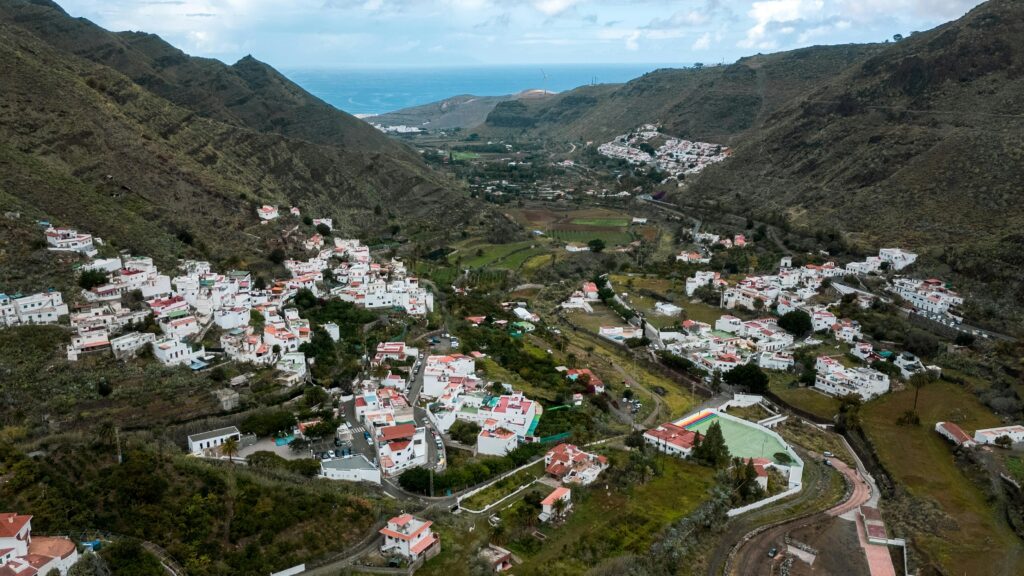
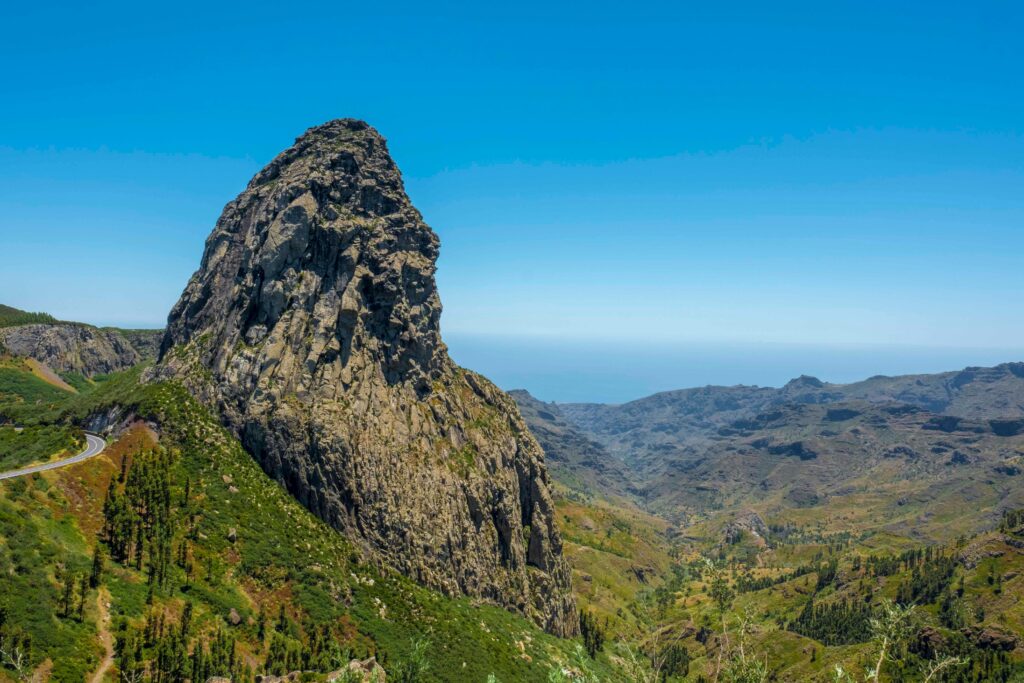


F: Florianópolis, Brazil
Green Travel Guide to Florianópolis

Florianópolis, the capital of the Brazilian state of Santa Catarina, is a stunning island known for its picturesque beaches, lush forests, and vibrant culture. Often referred to as “Magic Island,” Florianópolis is a paradise for nature lovers and adventure enthusiasts. With a growing emphasis on sustainable tourism, the island is embracing eco-friendly initiatives to preserve its natural beauty and encourage responsible travel.
This Green Travel Destination Guide to Florianópolis will provide you with sustainable travel options, eco-friendly accommodations, green activities, and tips to ensure your visit to this incredible Brazilian island is as eco-conscious as possible.
Getting to Florianópolis: Sustainable Travel Options
By Plane: The main gateway to Florianópolis is the Hercílio Luz International Airport (FLN), which is well-connected with major Brazilian cities and some international destinations. For eco-conscious travellers, consider offsetting your flight’s carbon emissions through carbon offset programs such as MyClimate or CO2logic.
By Bus: For travellers within Brazil, long-distance buses to Florianópolis are a sustainable and affordable option. Bus companies like Reunidas and Sampaio operate services from cities like São Paulo, Curitiba, and Porto Alegre. Taking the bus reduces your carbon footprint compared to flying.
By Train: Although there are no direct train services to Florianópolis, visitors can take a train to nearby cities like Itajaí and Joinville and then take a bus or car to Florianópolis, creating a multi-modal journey with lower environmental impact.
Sustainable Transportation within Florianópolis
Once in Florianópolis, there are several sustainable ways to get around the island.
Public Transportation: The city of Florianópolis has a relatively efficient and affordable public transportation system. Buses run throughout the island, connecting major neighbourhoods and beaches. Opting for public transport reduces the need for private vehicles, lowering your carbon footprint.
Cycling: Florianópolis is an excellent destination for cycling, with many bike lanes and scenic routes along the coastline. The island has bike-sharing systems, such as “Floripa by Bike”, which allows visitors to rent bikes to explore the city sustainably.
Walking: The island’s vibrant neighbourhoods and beach areas are best explored on foot. Walking is a great way to reduce your environmental impact while discovering the hidden gems of Florianópolis.
Electric Scooters: Electric scooters are becoming increasingly popular in Florianópolis, offering an eco-friendly and convenient way to travel short distances around the island. They can be rented through local providers such as Yellow and Grin.
Car Sharing: For longer trips or exploring remote areas, consider using car-sharing services like ShareNow or Zazcar, which allow you to rent electric or hybrid cars and explore the island without the need to own a vehicle.
Eco-Friendly Accommodations
Florianópolis has several eco-friendly hotels, hostels, and guesthouses that focus on sustainability by using renewable energy, minimising waste, and supporting the local community.
Pousada dos Sonhos: Located in the Barra da Lagoa area, this charming guesthouse focuses on using renewable energy and reducing its carbon footprint. They also support local initiatives by sourcing food from nearby organic farms and encourage guests to minimise their environmental impact.
Villas Jurerê Hotel: Situated in Jurerê Internacional, this boutique hotel has a strong commitment to sustainability. The hotel uses solar energy, focuses on water conservation, and reduces waste through recycling programs. It also offers eco-friendly amenities, such as organic toiletries and eco-conscious bedding.
Ilha de Santa Catarina Eco Hostel: This eco-hostel provides affordable and sustainable accommodation options for travellers who want to minimise their environmental impact. Located in Centro, it uses solar panels, promotes water-saving practices, and serves locally sourced, organic meals.
Hotel Miramar: A luxury option located in Lagoa da Conceição, Hotel Miramar incorporates sustainable design, energy-efficient lighting, and sustainable sourcing of food. The hotel works closely with local artisans and supports cultural initiatives to protect the island’s traditions.
Sustainable Activities and Attractions
Florianópolis is renowned for its natural beauty, and there are many sustainable activities that allow visitors to connect with nature while supporting environmental conservation.
1. Hiking and Trekking in the Island’s Forests
Florianópolis is home to a number of protected areas, such as Laguna do Peri, a conservation area located in the southern part of the island. The island offers various hiking trails through lush forests, where you can explore the local biodiversity, including native flora and fauna. Popular hiking routes include the Lagoa do Peri Trail and the Morro da Cruz Trail, which lead to stunning panoramic views of the island.
Eco-tip: Stick to marked trails to avoid disturbing wildlife and use biodegradable products, such as sunscreen, to protect the environment.
2. Eco-Friendly Surfing
Florianópolis is famous for its world-class surf spots, including Praia Mole and Barra da Lagoa. Many surf schools and operators in the region are committed to eco-friendly practices, using sustainable surfboards made from recycled materials and offering surf lessons that teach the importance of ocean conservation.
Eco-tip: Rent eco-friendly surfboards made from sustainable materials and support surf schools that practice environmental conservation, such as Vem Pro Mar.
3. Kayaking and Stand-Up Paddleboarding
Florianópolis offers great opportunities for kayaking and stand-up paddleboarding (SUP) in its calm lagoons and along its pristine coastline. The Lagoa da Conceição and Lagoa do Peri are popular spots for these water sports, and many eco-conscious rental companies are available, offering sustainable, eco-friendly equipment.
Eco-tip: Choose rental companies that use non-toxic, eco-friendly materials for their boards and kayaks, and avoid polluting the waters by respecting local marine life.
4. Visit the Campeche Island and Its Marine Life
Campeche Island, located off the southern coast of Florianópolis, is a protected area known for its rich biodiversity, including rare plants, birds, and marine life. Visitors can explore the island by taking eco-friendly boat tours and enjoying its beaches and archaeological sites.
Eco-tip: Respect the island’s wildlife and cultural heritage by sticking to designated trails and avoiding littering on the island.
5. Whale Watching (Seasonal)
Florianópolis is one of the best places in Brazil for whale watching, particularly during the whale migration season from July to November. Several eco-tourism companies operate responsible whale-watching tours that prioritise the well-being of the whales and their environment.
Eco-tip: Choose responsible tour operators that adhere to eco-guidelines, such as maintaining a safe distance from the whales and avoiding disturbances to their natural behaviour.
Eco-Friendly Dining and Shopping
Florianópolis supports sustainable dining by encouraging the use of organic, locally sourced ingredients. Here are a few sustainable dining options:
1. Restaurante Obar (Lagoa da Conceição)
Obar offers a menu focused on organic, local ingredients and sustainable food practices. The restaurant sources its vegetables, fruits, and seafood from nearby farms and fishermen, ensuring that every dish supports the island’s ecosystem and local economy.
2. Mercado Municipal de Florianópolis
Florianópolis’ Municipal Market is the perfect place to experience local food and culture while supporting sustainable agriculture. Local farmers and artisans offer organic produce, local cheeses, and sustainable seafood. The market also features eco-friendly products and handmade goods that reduce the environmental impact of mass production.
3. Açores Restaurante
Located in Barra da Lagoa, Açores offers a farm-to-table experience with dishes prepared using ingredients from sustainable, local sources. The restaurant focuses on reducing food waste and minimising its carbon footprint by sourcing products from eco-conscious farms.
4. Eco-Souvenirs and Crafts
Florianópolis has a vibrant market for handmade crafts made from sustainable materials. Visit local artisans and markets in neighbourhoods like Centro and Lagoa da Conceição to purchase souvenirs that support the local economy and promote environmentally conscious practices.
Green Travel Tips for Florianópolis
- Offset Your Carbon Emissions: Consider offsetting your carbon emissions by participating in carbon offset programs, especially if flying to Florianópolis.
- Use Public Transport or Bikes: When exploring the island, opt for public transportation or bike rentals to minimise your carbon footprint.
- Reduce Plastic Waste: Bring reusable water bottles, shopping bags, and containers to avoid plastic waste during your stay.
- Respect Nature: Whether hiking, surfing, or visiting local beaches, always follow the principles of Leave No Trace to protect the island’s natural environment.
- Support Local and Sustainable Businesses: Choose eco-friendly accommodations, restaurants, and tour operators that prioritise sustainability and support the local community.
Florianópolis as a Green Destination
Florianópolis is a fantastic green travel destination within Brazil, offering an ideal blend of adventure, relaxation, and sustainability. With its pristine beaches, lush forests, and vibrant culture, the island provides a perfect setting for eco-conscious travellers. By choosing sustainable transport, eco-friendly accommodations, and responsible activities, you can help preserve the natural beauty of this magical island while enjoying an unforgettable travel experience. Whether you’re hiking through forests, surfing in crystal-clear waters, or exploring local markets, Florianópolis invites you to discover its treasures in the most sustainable way possible.
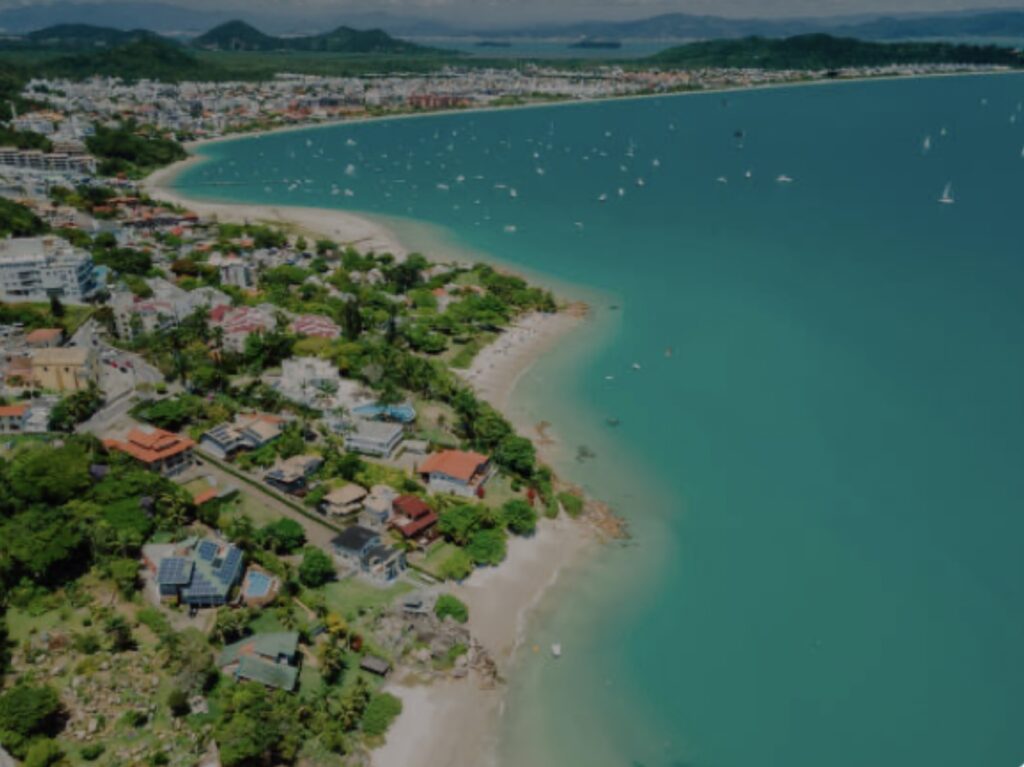
G: Gomera, Canary Islands
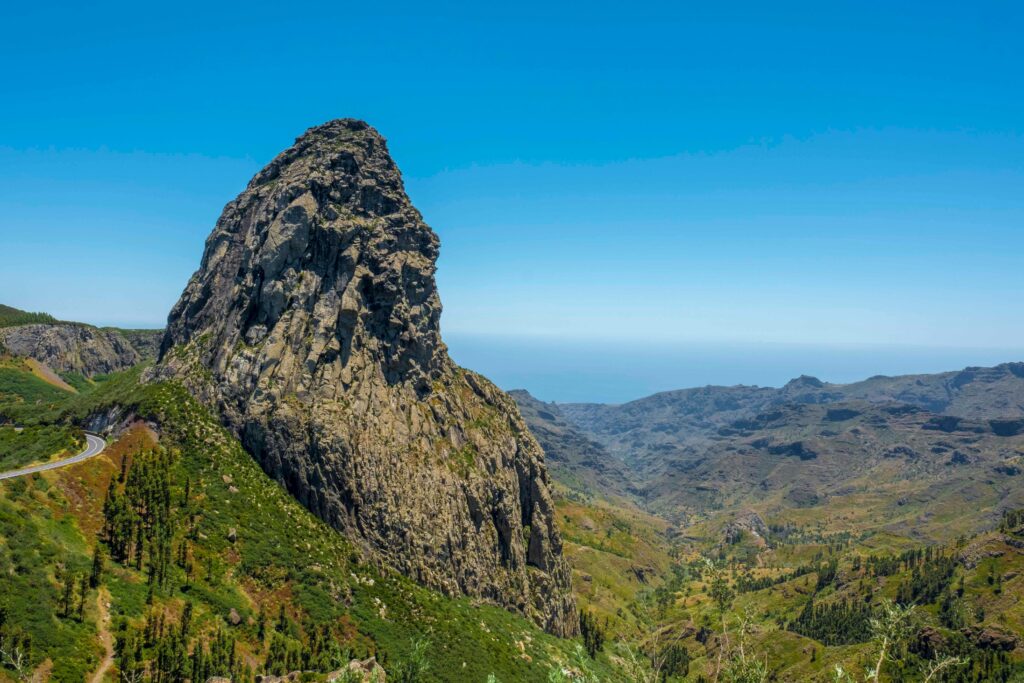
Green Travel Guide to (La) Gomera, Canary Islands
La Gomera, one of the Canary Islands off the coast of northwest Africa, is a hidden paradise for eco-conscious travellers. Known for its rugged terrain, lush forests, dramatic cliffs, and sustainable way of life, La Gomera offers a serene and environmentally conscious escape for those looking to connect with nature. The island is a UNESCO Biosphere Reserve, and its dedication to preserving the environment is evident in its focus on sustainable tourism, organic farming, and conservation efforts.
This Green Travel Destination Guide to La Gomera will provide you with sustainable travel options, eco-friendly accommodations, green activities, and tips for making the most of your time on this beautiful island while minimising your environmental impact.
Getting to La Gomera: Sustainable Travel Options
By Plane: The nearest airport to La Gomera is La Gomera Airport (GMZ), which connects to Tenerife via a short flight. If you’re coming from elsewhere, the most sustainable option however is to fly to Tenerife South Airport (TFS) and then take a ferry to La Gomera.
By Ferry: Taking a ferry is the greenest way to travel to La Gomera. Fred. Olsen Express and Naviera Armas operate regular ferry services between Los Cristianos (Tenerife) and San Sebastián (La Gomera). The ferry ride offers scenic views and is a great way to enjoy the surrounding waters while minimising your carbon footprint.
By Bus and Taxi: Once in Tenerife, using buses (operated by Titsa) or shared taxis to reach the ferry port is a low-emission way to travel. Alternatively, taking a hybrid or electric taxi to the port can also be an eco-friendly option.
Sustainable Transportation on La Gomera
La Gomera’s rugged landscape and small size make it ideal for eco-friendly exploration. Here are some sustainable ways to get around the island:
Walking and Hiking: La Gomera is a paradise for hikers, with an extensive network of hiking trails that take you through its lush forests, valleys, and mountains. Some of the most popular trails are found in Garajonay National Park, a UNESCO World Heritage site, where you can explore the island’s unique laurel forest.
Biking: Cycling is another great way to discover La Gomera’s beauty. You can rent electric bikes from various local providers to explore the island’s hills and valleys without exerting too much effort, reducing the environmental impact.
Car Rental (Electric): If you need to travel longer distances or reach remote areas, consider renting an electric car. Several car rental companies on the island now offer electric vehicles, which are more eco-friendly than traditional fuel-powered cars.
Public Transport: Public buses, operated by Guagua Gomerana, are an affordable and sustainable way to get around the island, though routes may be limited in more remote areas.
Eco-Friendly Accommodations
La Gomera offers a variety of eco-friendly accommodations that focus on sustainability, providing travellers with an opportunity to stay in eco-conscious settings while enjoying the island’s natural beauty.
Hotel Jardín Tecina: Located in Valle Gran Rey, this hotel embraces sustainability with solar energy systems, water-saving measures, and a commitment to using local, organic food. The property also emphasises environmental education and hosts activities that encourage guests to learn about the island’s ecosystems.
La Cabaña del Valle: A charming eco-lodge located in the heart of La Gomera, this sustainable retreat uses renewable energy and locally sourced materials in its construction. The property focuses on organic farming and offers guests the opportunity to learn about the island’s sustainable agricultural practices.
Eco Finca La Laja: Situated in San Sebastián, this eco-friendly finca (farmhouse) offers accommodation in a peaceful, rural setting. The property uses solar energy, rainwater harvesting, and has an organic garden that supplies fresh, locally grown produce to its guests.
Pension El Drago: A small, family-run guesthouse in Hermigua, this eco-accommodation promotes sustainability by sourcing food locally, using natural cleaning products, and encouraging waste reduction.
Sustainable Activities and Attractions
La Gomera is known for its spectacular landscapes and commitment to preserving its natural heritage. Here are some sustainable activities and attractions that allow you to explore the island’s diverse ecosystems while minimising your environmental impact.
1. Hiking in Garajonay National Park
Garajonay National Park is the heart of La Gomera and a UNESCO World Heritage site. The park is home to the ancient laurel forest, one of the best-preserved of its kind in the world. The park offers a network of well-marked trails that vary in difficulty, from easy walks to challenging treks up the island’s volcanic peaks. You can hike through mist-covered forests, past waterfalls, and enjoy breathtaking views of the island’s diverse landscapes.
Eco-tip: Stick to designated trails to minimise your environmental impact and avoid disturbing the flora and fauna. Carry a reusable water bottle and trash bags to leave no waste behind.
2. Whale and Dolphin Watching
The waters surrounding La Gomera are rich in marine life, and whale and dolphin watching is a popular activity. Several eco-conscious tour operators offer boat tours with a focus on responsible wildlife watching, ensuring minimal disturbance to the marine life while providing guests with the opportunity to spot species such as pilot whales, bottlenose dolphins, and sperm whales.
Eco-tip: Choose tour operators that follow responsible whale-watching guidelines, such as keeping a respectful distance from the animals and avoiding disturbing their natural behaviours.
3. Visiting the Valle Gran Rey
Valle Gran Rey is one of the most beautiful valleys on La Gomera, surrounded by steep cliffs and lush greenery. This area is perfect for eco-friendly hikes, and you can explore the valley on foot or by bicycle. It’s also a great spot for sustainable agriculture, where you can visit local farms producing organic crops like bananas, avocados, and tomatoes.
Eco-tip: Support local farmers by purchasing fresh produce from markets or farm shops, helping to reduce the environmental footprint of imported food.
4. Explore the Hermigua Valley
The Hermigua Valley is another must-see destination on La Gomera, known for its rich agriculture and striking landscapes. The valley is home to many organic farms that practice sustainable agriculture. You can explore the area on foot, take a guided tour to learn about local farming practices, or visit the Agulo village, one of the most picturesque on the island.
Eco-tip: Visit organic farms and support sustainable food production. Choose tours that emphasise local culture and environmental preservation.
5. Visit the Fortaleza de Chipude
For history enthusiasts, the Fortaleza de Chipude offers a glimpse into the island’s past. This ancient site, perched high on a hill, is a natural fortress with sweeping views of La Gomera. The hike to the site is challenging but rewarding, offering fantastic views of the surrounding area.
Eco-tip: As with all hiking activities, stay on the marked trails to minimize your environmental impact and carry a waste bag to pack out trash.
Eco-Friendly Dining and Shopping
La Gomera has a thriving local food scene with an emphasis on organic produce, local seafood, and sustainable agricultural practices. Here are a few eco-friendly dining and shopping options:
1. Restaurante La Cueva (San Sebastián)
La Cueva is a farm-to-table restaurant that focuses on local, organic ingredients. They source fresh produce, meat, and fish from nearby farms and fishermen, supporting sustainable agriculture and reducing food miles. The restaurant’s emphasis on locally sourced dishes highlights the island’s culinary traditions.
2. El Patio de Tita (Valle Gran Rey)
A charming restaurant offering traditional Canary Island dishes made from organic ingredients. The owners support local farmers and emphasise waste reduction and sustainable practices. Vegetarians and vegans will find many options here, including locally grown vegetables and grains.
3. Farmers’ Markets
La Gomera is known for its local and organic produce, and several villages on the island have farmers’ markets where you can purchase fresh, locally grown fruits, vegetables, and handmade goods. Supporting these markets is an excellent way to reduce your carbon footprint and promote local, sustainable agriculture.
4. Handmade Crafts and Souvenirs
La Gomera has a rich tradition of craftsmanship, with artisans creating beautiful goods from locally sourced materials. Look for eco-friendly souvenirs such as handmade textiles, pottery, and jewellery, which support the local economy and promote sustainability.
Green Travel Tips for La Gomera
- Offset Your Carbon Emissions: If you’re flying to La Gomera, consider offsetting your flight’s carbon emissions through programs like MyClimate or CO2logic.
- Pack Light and Reusable: Bring your own reusable water bottles, shopping bags, and travel utensils to minimise waste during your stay.
- Support Local Businesses: Choose accommodations, restaurants, and activities that support sustainable and eco-friendly practices.
- Respect the Environment: Stick to marked trails when hiking, avoid littering, and respect local wildlife and ecosystems.
La Gomera as a Green Destination
La Gomera is a perfect destination for eco-conscious travellers looking to immerse themselves in nature while supporting sustainable tourism. With its pristine landscapes, commitment to conservation, and sustainable travel options, La Gomera offers an authentic experience that prioritises the environment. Whether you’re hiking in Garajonay National Park, exploring the island’s charming valleys, or enjoying organic, locally sourced meals, La Gomera provides a wonderful, green escape that aligns with the values of responsible travel. By making sustainable choices, you can help preserve this beautiful island for future generations.
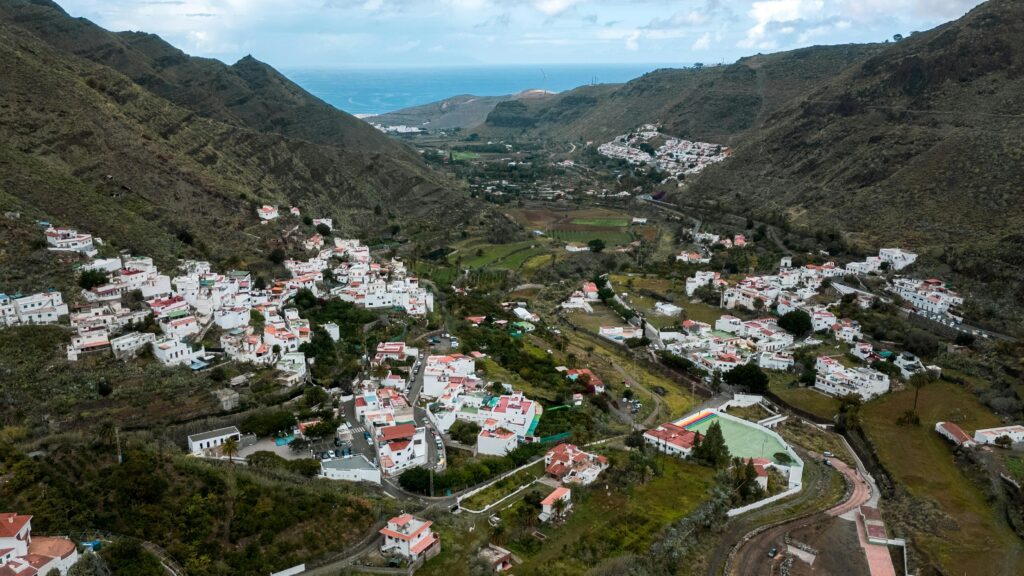
H: Huangshan, China

Green Travel Guide to Huangshan
Huangshan, also known as the Yellow Mountains, is one of China’s most iconic natural landmarks. Renowned for its towering granite peaks, ancient pines, and surreal dreamlike landscapes, it is a UNESCO World Heritage Site and a hub for eco-conscious travellers. The region’s commitment to conservation, sustainable tourism, and cultural preservation makes Huangshan a perfect destination for those looking to connect with nature while respecting the environment.
This Green Travel Destination Guide to Huangshan will help you plan an eco-friendly, sustainable visit to this breathtaking region.
Getting to Huangshan: Sustainable Travel Options
By Plane:
The Huangshan Tunxi International Airport (TXN) serves as the main airport for travellers flying into the region. While flying should generally be minimised in favour of lower-emission travel, the airport offers connections from major cities in China like Beijing, Shanghai, and Guangzhou. To make your travel more sustainable, choose a direct flight to reduce the environmental impact.
By Train:
For a more eco-friendly approach, you can take the train to Huangshan from major cities such as Shanghai or Hangzhou. Trains are an energy-efficient way to travel and offer scenic views of the countryside, allowing you to enjoy the landscape while reducing your carbon footprint.
By Bus:
Once you arrive at Huangshan city, there are buses that take you directly to Huangshan Scenic Area. Buses are a sustainable way to navigate the region and are typically more eco-friendly than renting private cars.
Sustainable Transportation in Huangshan
Once you’re in Huangshan, there are several sustainable ways to explore this UNESCO World Heritage site:
Walking and Hiking:
The Huangshan Mountains are best explored on foot, with over 60 kilometres of scenic hiking trails leading to famous peaks like Yellow Mountain, Xihai Grand Canyon, and Bright Summit Peak. The trails are well-maintained, and walking is the most eco-friendly way to experience the landscapes.
Cable Cars:
Although walking is highly recommended, there are also eco-friendly cable cars that can take you to the summit of the mountains. These cable cars are a sustainable option for visitors who may not be able to hike the entire way or prefer to save time while reducing their carbon footprint.
Electric Shuttle Buses:
For convenience, electric shuttle buses are available within the Huangshan Scenic Area. These buses operate on a limited route and are an eco-friendly option for getting around the park without emitting pollutants.
Eco-Friendly Accommodations
Huangshan offers various sustainable and eco-conscious accommodations that focus on reducing their environmental impact while offering guests an authentic experience. Here are a few options:
Huangshan International Hotel
This hotel promotes sustainability through energy-saving technologies, waste reduction systems, and the use of eco-friendly materials. It also offers local and organic food options, supporting regional agriculture and reducing the environmental impact of imported goods.
Huangshan Taoyuan Hotel
Known for its green initiatives, such as using solar power, reducing water consumption, and promoting zero-waste practices, this hotel is a great choice for eco-conscious travellers. It also supports local craftsmanship by featuring handmade, locally sourced decor.
Eco-Friendly Guesthouses in Tangkou Village
Located at the base of Huangshan Mountain, the traditional guesthouses in Tangkou village are a sustainable choice. Many of these guesthouses focus on eco-friendly practices such as using natural building materials, providing organic meals, and supporting local artisans and farmers.
Sustainable Activities and Attractions
Huangshan’s stunning landscapes offer plenty of eco-friendly activities for those interested in exploring the region responsibly.
1. Hiking in Huangshan Mountain
Hiking is the best way to experience the natural beauty of the Huangshan Mountain Range. The mountains are known for their distinctive granite peaks, ancient pine trees, and sea of clouds, which attract photographers and nature lovers alike. Some popular trails include the West Sea Grand Canyon, Xihai Grand Canyon, and the route up to the Summit.
Eco-tip: Stick to marked trails to avoid damaging the delicate flora and fauna, and carry a reusable water bottle to reduce plastic waste.
2. Visit the Ancient Villages of Huangshan
The ancient villages near Huangshan, such as Hongcun, Xidi, and Shexian, are UNESCO World Heritage Sites famous for their preserved architecture and traditional culture. These villages offer a glimpse into ancient Chinese life and are committed to sustainable tourism by promoting cultural preservation and environmental awareness.
Eco-tip: Support local artisans by purchasing eco-friendly handmade goods and handicrafts, such as bamboo products or natural fabrics.
3. Explore the Huangshan Pine Forests
The pine forests of Huangshan are an iconic part of the landscape, with some trees estimated to be over 1,000 years old. These forests are home to many species of flora and fauna, making them a priority for conservation efforts. Eco-friendly tours guide visitors through these forests while explaining the importance of protecting these ancient ecosystems.
Eco-tip: Do not disturb or climb the ancient trees, and make sure to leave no trace of your visit.
4. Visit the Hot Springs at Huangshan
The Hot Springs at Huangshan are known for their therapeutic properties and are surrounded by beautiful natural scenery. The springs are a popular eco-tourism attraction that promotes sustainable health and wellness tourism. Many eco-conscious resorts near the hot springs use renewable energy and focus on water conservation.
Eco-tip: Choose accommodations and spas that prioritise sustainable water use and environmentally friendly practices.
5. Bamboo Forest in Tangkou
The bamboo forest in Tangkou is a serene escape into nature, where you can walk among tall, green bamboo that stretches high into the sky. The forest is an important part of the local ecosystem and a great way to enjoy a peaceful and eco-friendly adventure.
Eco-tip: Take care not to damage the bamboo or disturb wildlife, and respect the local environment by minimising noise and leaving no litter.
Sustainable Dining and Shopping
Huangshan is home to various eco-friendly dining options that focus on local, seasonal, and organic ingredients.
1. Local Cuisine at Huangshan Tea House
Enjoy the best of Huangshan’s local tea culture by visiting a tea house that serves organic tea and local delicacies. The Huangshan green tea is a renowned specialty, and many tea houses promote sustainability by growing tea without the use of harmful chemicals.
2. Organic Farms and Farmers’ Markets
The region around Huangshan is famous for its organic farming, particularly tea and herbs. You can visit local farmers’ markets or take part in farm-to-table experiences, where you can learn about the importance of sustainable agriculture and purchase fresh, locally grown produce.
3. Traditional Crafts and Eco-Friendly Souvenirs
Huangshan is known for its handcrafted products like bamboo goods, wood carvings, and silk. Look for eco-friendly souvenirs that support local artisans and minimise the environmental impact by choosing locally made goods.
Eco-tip: Choose products made from renewable or recycled materials, and avoid plastic souvenirs that contribute to waste.
Green Travel Tips for Huangshan
- Use Eco-Friendly Transportation: Choose public transportation, trains, or eco-friendly shuttle buses to reduce your carbon footprint.
- Respect Local Culture: Embrace sustainable tourism practices by supporting local communities and businesses that promote cultural preservation and environmental protection.
- Travel Light: Minimize your luggage to reduce your environmental impact. Bring reusable bottles, bags, and utensils to cut down on plastic waste.
- Stay on Designated Trails: To protect the delicate ecosystem, always follow marked trails when hiking in Huangshan’s mountains and forests.
- Offset Your Carbon Emissions: If flying to Huangshan, consider offsetting your flight’s carbon emissions through an accredited offset program.
Huangshan as a Green Destination
Huangshan offers an extraordinary opportunity to experience one of China’s most beautiful natural wonders while supporting sustainability and conservation. With its commitment to eco-friendly practices, the region promotes a harmonious relationship between tourism and nature. Whether you are hiking its awe-inspiring peaks, exploring ancient villages, or relaxing in the hot springs, you’ll find a wealth of ways to enjoy this stunning destination responsibly. By embracing green travel practices, you can both enjoy and help preserve the natural beauty and cultural heritage of Huangshan.

I: Iceland

Green Travel Guide to Iceland
Iceland, known for its incredible landscapes of glaciers, volcanoes, waterfalls, and geothermal hot springs, has emerged as a global leader in eco-tourism. The island nation is known for its commitment to sustainable tourism, renewable energy, and conservation efforts. With a focus on preserving its unique environment, Iceland offers an unparalleled opportunity for eco-conscious travellers to explore and connect with nature in a responsible way.
This Green Travel Destination Guide to Iceland will help you plan an eco-friendly, sustainable visit to this spectacular Nordic destination.
Getting to Iceland: Sustainable Travel Options
By Plane:
Iceland’s main international gateway is Keflavik International Airport (KEF), located just outside the capital, Reykjavik. While flying contributes to carbon emissions, Iceland is actively working on ways to mitigate the environmental impact, such as the development of electric planes and the use of carbon offset programs. For travellers looking to make their journey more sustainable, it is advised to offset carbon emissions through reputable offset programs.
By Ferry:
For travellers already in Europe, there is the option to take a ferry from Denmark to Iceland. The ferry offers a lower-carbon alternative to flying and can also serve as a beautiful way to enjoy the North Atlantic’s coastlines. The ferry takes around 2-3 days and is a great way to reduce emissions while experiencing scenic views.
Sustainable Transportation in Iceland
Iceland offers a range of eco-friendly travel options to get around and experience the country’s incredible landscapes.
Electric Car Rentals:
Iceland is at the forefront of electric vehicle (EV) adoption, with a growing network of charging stations throughout the country. Renting an electric car is a sustainable and convenient way to explore the country’s natural wonders without contributing to carbon emissions. Many rental companies in Iceland now offer electric vehicles and hybrid options for eco-conscious travellers.
Public Transportation:
Reykjavik offers an efficient and clean public transportation system, including buses that use environmentally friendly technologies. Iceland also offers long-distance buses that connect major towns and destinations, which can be a sustainable travel option for those looking to explore more remote parts of the country.
Cycling:
For a truly sustainable experience, consider cycling through Iceland’s countryside. While the terrain (and weather!) can be challenging, there are numerous cycling paths that allow you to travel responsibly while immersing yourself in Iceland’s majestic landscapes. Popular cycling routes include the Golden Circle, and several eco-tourism companies offer bike rentals and guided cycling tours.
Eco-Friendly Tours:
When visiting popular sites like Þingvellir National Park, the Gullfoss Waterfall, or the Blue Lagoon, choose eco-friendly tour operators that use electric vehicles, hybrid buses, or even electric boats for sightseeing. These tours focus on minimising environmental impacts while giving you a unique, sustainable way to explore.
Sustainable Accommodations in Iceland
Iceland boasts a growing number of eco-friendly accommodations that focus on sustainability, conservation, and minimising environmental impact. Here are a few sustainable options:
1. Ion Adventure Hotel
Located near the Thingvellir National Park, this eco-conscious hotel uses geothermal energy for heating and hot water, and promotes sustainability through its design. The hotel’s unique structure integrates seamlessly with the surrounding landscape, and the use of local materials further reduces its environmental footprint.
2. Hótel Laxá
Situated near Lake Mývatn, this hotel is known for its sustainable practices, such as water and energy conservation and using locally sourced food. The hotel works closely with local farmers to ensure that its food offerings support the region’s sustainable agriculture initiatives.
3. Eco-Cabins and Guesthouses
In more remote parts of Iceland, you’ll find eco-friendly guesthouses and cabins that are powered by renewable energy and built using sustainable materials. These accommodations allow guests to experience Iceland’s natural beauty while reducing their environmental impact. Many are located in isolated areas, providing a truly tranquil and eco-conscious experience.
4. Skyr Guesthouse
Located in South Iceland, this guesthouse uses sustainable energy sources and minimises waste. Guests are encouraged to recycle, use energy-efficient amenities, and support local businesses by purchasing handmade Icelandic goods.
Sustainable Activities and Attractions
Iceland’s extraordinary natural beauty offers many eco-friendly activities and experiences that allow travellers to connect with nature while supporting conservation efforts.
1. Geothermal Baths and Hot Springs
Iceland is home to many geothermal hot springs, including the famous Blue Lagoon. These geothermal pools are a great way to relax and enjoy nature’s healing properties. Many of Iceland’s hot springs use sustainable energy sources, and the Blue Lagoon, for example, has implemented a water recycling system to ensure minimal waste.
Eco-tip: When visiting geothermal areas, be mindful of water usage and avoid products with harmful chemicals that could damage the delicate ecosystem.
2. Hiking and Trekking in National Parks
Iceland’s national parks, such as Þingvellir National Park, Vatnajökull, and Skaftafell, offer some of the most pristine hiking experiences in the world. Trails are maintained to minimise environmental damage, and there are numerous guided tours that focus on sustainability.
Eco-tip: Stick to marked trails to avoid damaging fragile ecosystems and take only photos, leaving no trace of your visit.
3. Whale Watching
Iceland is one of the best places in the world to see whales, dolphins, and other marine life. Many whale-watching operators in Iceland focus on sustainability, using electric boats and working closely with marine conservation organisations.
Eco-tip: Choose an operator that is certified by sustainability organisations, and respect the wildlife by maintaining a safe distance and being mindful of not creating too much noise.
4. Glacier Hiking and Ice Climbing
Iceland’s glaciers are some of the most breathtaking natural wonders on the planet. Eco-friendly glacier hiking and ice climbing tours allow you to experience these majestic landscapes responsibly. Operators use environmentally conscious practices to reduce their carbon footprint and minimise their impact on the glaciers.
Eco-tip: Participate in guided eco-tours that promote glacier preservation, and avoid off-trail activities that could cause long-term damage to the glaciers.
5. Northern Lights Viewing
Iceland is one of the best places in the world to witness the Northern Lights. To reduce the environmental impact of your trip, choose sustainable Northern Lights tours that prioritise small groups, use low-impact transportation, and respect natural areas.
Eco-tip: Reduce light pollution and noise to enhance your experience while also protecting the delicate wildlife in the region.
Sustainable Dining and Shopping
Iceland offers a variety of local and organic food options that emphasise sustainability and environmental consciousness. Here are some tips on how to enjoy Icelandic cuisine responsibly:
1. Local Icelandic Cuisine
Icelandic cuisine is based on fresh, locally sourced ingredients such as fish, lamb, dairy, and seasonal vegetables. Sustainable dining practices are becoming more common, with many restaurants focusing on locally grown and organic produce. Consider dining at farm-to-table restaurants and eco-conscious cafes in Reykjavik and other towns.
2. Farmers’ Markets
Iceland has several farmers’ markets, particularly in Reykjavik, where you can buy organic products and local delicacies. Purchasing directly from farmers helps reduce food miles and supports the local economy while promoting sustainable agriculture.
3. Eco-Friendly Souvenirs
Support local artisans by purchasing sustainable souvenirs, such as handcrafted woollen goods, recycled products, or organic Icelandic skincare items. Look for products made from sustainable materials and support businesses that prioritise environmental responsibility.
Green Travel Tips for Iceland
- Reduce Plastic Use: Iceland is committed to reducing plastic waste, so bring reusable bottles, bags, and utensils to minimise your impact.
- Offset Carbon Emissions: Use carbon offset programs for your flights and travel activities to reduce your overall environmental footprint.
- Respect Nature: Follow Leave No Trace principles when hiking or visiting natural sites, and be mindful of the fragile ecosystems you are exploring.
- Choose Local and Sustainable: Support local, sustainable businesses by choosing eco-friendly accommodations, restaurants, and tours that focus on environmental conservation.
Iceland as a Green Destination
Iceland is a shining example of how sustainable tourism can work in harmony with nature. With its commitment to renewable energy, conservation, and eco-friendly practices, Iceland offers travellers a chance to experience the stunning beauty of the North Atlantic while minimising their environmental impact. By embracing green travel principles, you can help preserve Iceland’s unique landscapes, wildlife, and culture.

J: Java, Indonesia
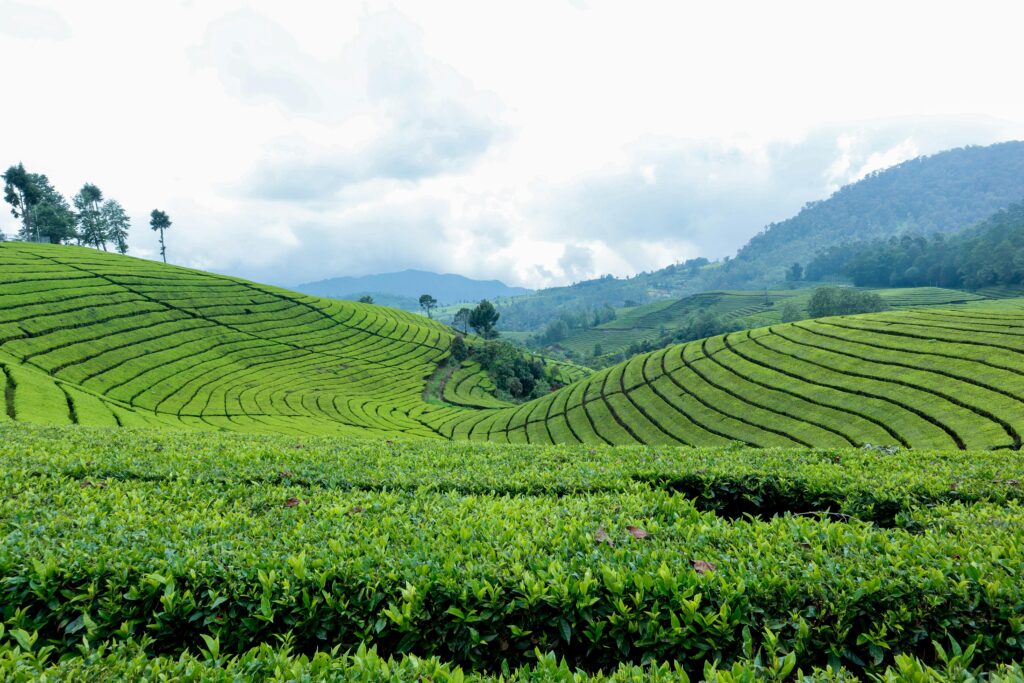
Java, the most populous island in Indonesia, is a fascinating blend of modern cities, rich cultural heritage, lush jungles, and dramatic landscapes. Known for its volcanic mountains, ancient temples, and vibrant cultural traditions, Java is also becoming a leader in eco-tourism. The island has been making strides in sustainable tourism by promoting responsible travel that supports the conservation of its natural beauty and cultural heritage.
This Green Travel Destination Guide to Java will help you plan an eco-friendly and sustainable visit while enjoying the best the island has to offer.
Getting to Java: Sustainable Travel Options
By Plane:
The main international airport in Java is Soekarno-Hatta International Airport (CGK), located in Jakarta, the capital city of Indonesia. While flying is typically associated with carbon emissions, travellers can offset their flight emissions through various carbon offset programs available online. You can also choose direct flights to reduce your carbon footprint.
By Train:
Java is well connected by an extensive train network, which is a more eco-friendly travel option compared to flying or driving. The Indonesian Railways offer comfortable and affordable train rides between major cities like Jakarta, Yogyakarta, Surabaya, and Bandung. The train system in Java is an excellent way to reduce your carbon emissions while enjoying scenic views of the island’s landscapes.
By Bus:
There are also long-distance buses that can take you around Java. The buses are often more energy-efficient than private cars and allow for easy exploration of the island. Look for eco-friendly bus operators that prioritise fuel efficiency and low-emission vehicles.
Sustainable Transportation on Java
Java offers several ways to travel sustainably once you’re on the island.
Public Transportation:
In cities like Jakarta and Yogyakarta, public transportation is widely available. Buses, light rail, and taxis are options for navigating these urban areas. Many cities in Java are working toward reducing their carbon emissions by transitioning to electric buses and improving public transport infrastructure.
Cycling:
Cycling is an increasingly popular way to explore Java’s cities and rural areas. Many destinations, like Yogyakarta and Bandung, are becoming more bike-friendly, with designated bike lanes and rental services. Cycling is an eco-friendly way to explore at your own pace while reducing your carbon footprint.
Electric Motorbikes:
Java is also introducing electric motorbikes in urban areas. These zero-emission vehicles are becoming a sustainable choice for short-distance travel around cities, reducing the reliance on traditional motorbikes.
Shared Transport:
Consider using shared rides or carpooling services like Gojek or Grab in Java’s major cities to reduce the number of vehicles on the road and reduce emissions.
Sustainable Accommodations in Java
There are many eco-friendly accommodations across Java that support sustainability through energy-saving technologies, water conservation, and waste management. Here are some sustainable places to stay:
1. Greenhost Boutique Hotel, Yogyakarta
Located in the heart of Yogyakarta, Greenhost Boutique Hotel is an eco-conscious hotel that incorporates sustainable practices such as solar energy, organic farming, and recycled materials. The hotel uses local, sustainable products for its décor and offers organic food to guests.
2. Plataran Cangkringan, Yogyakarta
This eco-resort located near Merapi Volcano is built using sustainable materials and focuses on minimizing its carbon footprint. It supports local communities by offering organic food from nearby farms and promoting cultural sustainability.
3. Villa D’Coconut, West Java
This sustainable resort on the coast of West Java integrates eco-friendly practices, such as rainwater harvesting, waste reduction, and using renewable energy sources. It offers a peaceful retreat in nature while supporting local conservation efforts.
4. Adiwana Arya Villas, Bali
While technically located in Bali, the Adiwana Arya Villas in the cultural area of Ubud is a great choice if you’re traveling between islands. This eco-luxury resort focuses on sustainable architecture, locally sourced materials, and supports local artisans.
Sustainable Activities and Attractions in Java
Java offers a wealth of natural beauty and cultural attractions, many of which are designed to promote sustainable tourism and conservation.
1. Explore the Bromo Tengger Semeru National Park
Known for its dramatic volcanic landscapes, Mount Bromo is one of Java’s most iconic natural wonders. The national park is home to the Tenggerese people and several endangered species. To ensure that tourism supports conservation, the park has implemented measures to reduce waste and protect local flora and fauna.
Eco-tip: Stick to the designated trails, hire a local guide to learn about the region’s conservation efforts, and respect the sacred nature of the area.
2. Visit the Borobudur Temple
The Borobudur Temple in Magelang, a UNESCO World Heritage Site, is one of the largest Buddhist monuments in the world. Efforts are being made to preserve this magnificent structure, and the surrounding areas are being managed with sustainability in mind. Tourism revenues help fund conservation projects and support local communities.
Eco-tip: Take a guided tour to learn about the temple’s history and its ongoing conservation efforts. Support local artisans and buy sustainably produced souvenirs.
3. Eco-Trekking in Gunung Gede Pangrango National Park
Gunung Gede Pangrango National Park, located in West Java, offers eco-friendly trekking options where visitors can explore lush forests, waterfalls, and the region’s unique biodiversity. The park is dedicated to preserving ecosystems and engaging local communities in environmental conservation.
Eco-tip: Stick to marked trails to protect the environment and be conscious of waste, especially plastic, during your trek.
4. Visit the Coffee Plantations in West Java
West Java is home to some of Indonesia’s best coffee, and many coffee plantations focus on sustainable farming practices. Take a tour of these plantations to learn about organic farming techniques, and how sustainable agriculture can support local communities and ecosystems.
Eco-tip: Support coffee brands and farms that use ethical sourcing, fair trade practices, and promote environmental conservation.
Sustainable Dining and Shopping
Java offers plenty of opportunities to enjoy local cuisine while supporting sustainability and eco-friendly practices.
1. Traditional Javanese Cuisine
Javanese cuisine is based on locally grown, seasonal produce, and traditional dishes such as gado-gado, tempeh, and nasi gudeg are made from fresh, locally sourced ingredients. Look for restaurants that support local farmers and use organic or sustainable produce.
2. Farmers’ Markets and Organic Markets
In cities like Yogyakarta and Bandung, you can find farmers’ markets where you can purchase fresh, local produce, organic products, and handmade goods. These markets are great for supporting sustainable agriculture and reducing the carbon footprint of imported food.
3. Eco-Friendly Souvenirs
When shopping in Java, look for locally made handicrafts that are produced in an environmentally conscious manner. Support artisans who use recycled materials and sustainable methods, such as hand-woven textiles, wooden carvings, and natural products like batik.
Green Travel Tips for Java
- Reduce Plastic Use: Bring a reusable water bottle, shopping bag, and utensils to help minimise waste in Java’s urban and rural areas.
- Choose Eco-Friendly Tours: When booking tours, seek out operators that prioritise sustainability, such as those that use electric vehicles, hybrid buses, or offer carbon-offset tours.
- Support Local Communities: Engage with local businesses and artisans that promote cultural preservation and environmental sustainability. This ensures that tourism revenues benefit the communities directly.
- Respect Local Traditions: Many of Java’s cultural landmarks are sacred and must be treated with respect. Follow any rules or guidelines set by local communities or tour operators.
- Offset Your Carbon Emissions: If flying, consider offsetting your travel emissions through certified programs.
Java as a Green Destination
Java offers travellers a unique opportunity to experience Indonesia’s rich culture, breathtaking landscapes, and sustainable tourism initiatives. By supporting eco-friendly accommodations, activities, and businesses, you can enjoy the beauty of the island while helping preserve its environment and culture for future generations. Through responsible travel choices, Java can continue to thrive as a green destination, where both nature and people benefit from a balanced approach to tourism.
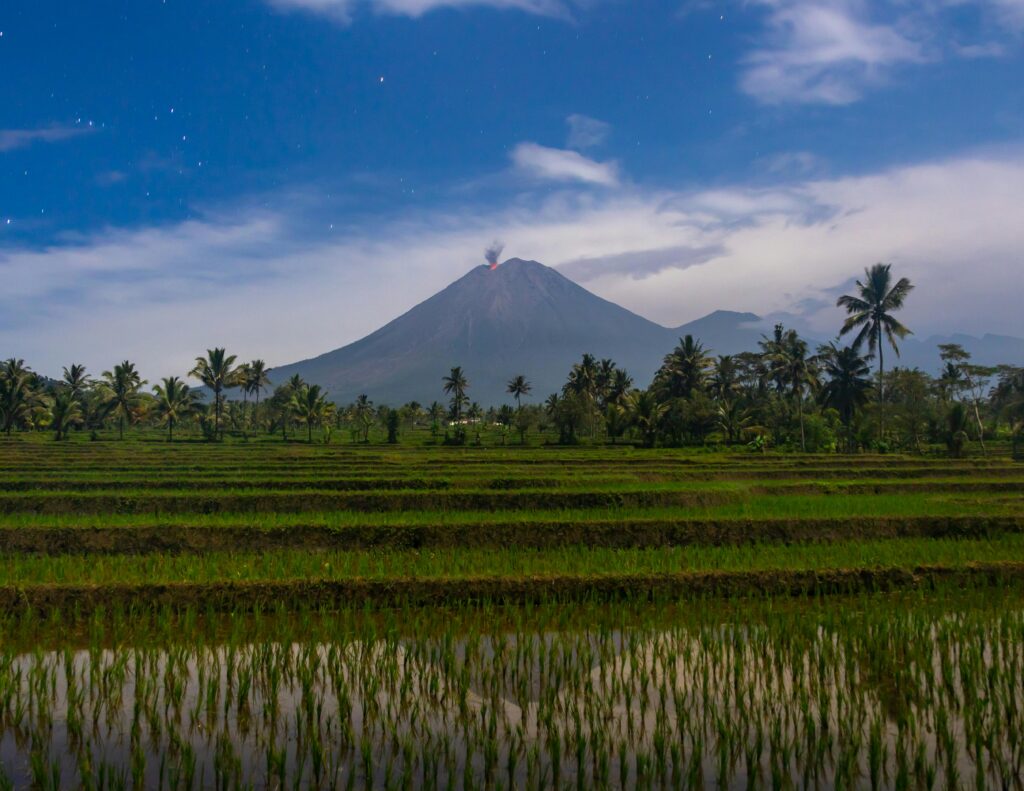
.
